One of the easiest ways to get started with eCommerce is to use a platform that provides out-of-the-box support for the most foundational features to run your business. In fact, for a long time, signing up with a single eCommerce platform vendor was the only option.
It may sound counterintuitive, but traditional eCommerce platforms often lack flexibility because of how the frontend and backend are tied together. Customizing one aspect may require a skilled professional to ensure you don’t “break” anything.
That’s where composable commerce comes in.
With composable commerce, your solution is made up of the independent components that you choose — not the features your vendor chose for you. Keep reading to learn about composable commerce and how it can benefit your eCommerce business.
What is Composable Commerce?
Composable commerce is the strategy of selecting best-of-breed eCommerce components and composing them into a custom application. It leverages modern technologies and approaches like MACH (Microservices, APIs, Cloud, and Headless) and Jamstack (JavaScript, APIs, and Markup) to adapt to rapidly changing market dynamics.
For example, a composable commerce shop might use one solution for processing payments, another for shipping and managing eCommerce subscriptions, and another for adding content to the website. Although all of these solutions come from different vendors, the customer experiences them as a single eCommerce store.
The term “composable commerce” was popularized by a Gartner report in 2020. In the report, Gartner predicted that by 2023, organizations that have adopted a composable approach will outpace their competition by 80% in the speed of new feature implementation.
Gartner isn’t the only true believer in composable commerce. 95% of eCommerce professionals now believe it’s the right approach to take.
Since composable commerce involves using components from different sources, let’s talk about those components, or PBCs.
What is a PBC?
The individual components that make up a composable commerce platform are called Packaged Business Capabilities, or PBCs.
You can think of PBCs as the building blocks of your eCommerce store. Each PBC is a standalone solution. In other words, it’s not just a piece of a larger platform but a separate service that communicates with the other components through APIs.
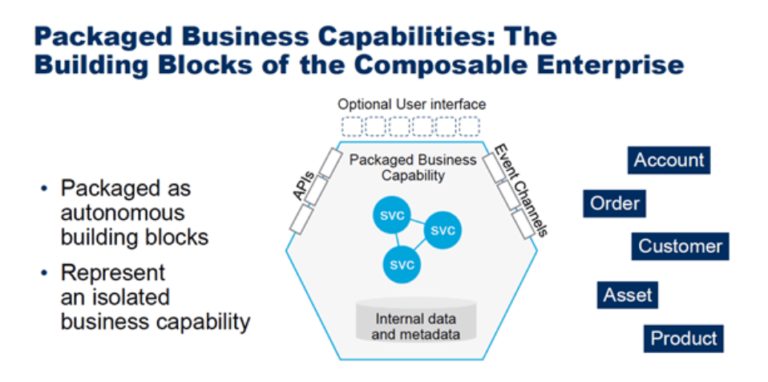
The terms “PBC” and “microservice” are sometimes used interchangeably, but that’s not completely accurate. A microservice is an architectural style consisting of a single service. A PBC is focused on fulfilling a single business requirement and can be made of one or more microservices.
How Does Composable Commerce Differ From Traditional Commerce?
Traditional eCommerce platforms are often delivered as an “all-in-one” solution, meaning they provide everything you need to create and run an online store. This is conventionally known as a “monolithic architecture.”
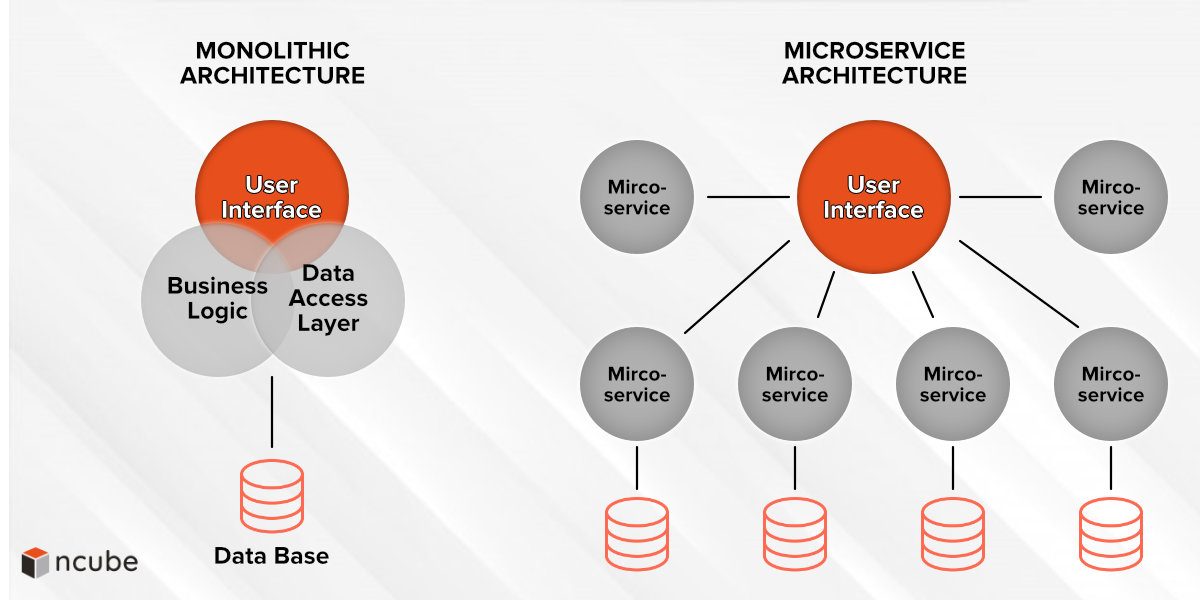
All of the components are part of a single, larger platform. For example, the service that tracks your inventory, the one that manages your checkout process, and the one that powers your store’s search function are all part of the same application — often an eCommerce platform, like Shopify or Magento.
Composable commerce allows you to assemble a custom application from the modules that best suit your needs. You’re not locked into a single vendor, and you can add or subtract services at will. It connects via API to your other modules and provides the features that are valuable to your online store. This makes your eCommerce solution unique and flexible.
Tenets of Composable Commerce
We’ve described what a composable commerce application looks like. But composable commerce is more than a technical definition — it’s a whole new approach to digital commerce.
This approach has four key tenets: it’s modular, open, flexible, and business-centric.
Modular
Composable commerce architecture is always modular — all the components are pluggable, scalable, and replaceable. You can add, remove, or change one piece without affecting the others. Modifying your eCommerce website content doesn’t require changing your backend functionality.
Composable commerce helps you achieve this by enabling you to build an eCommerce store from interconnected components rather than using a pre-packaged system like Shopify or Magento.
Open Ecosystem
Composable commerce has an open ecosystem. In other words, you’re not locked into a particular vendor.
If you’re using one piece of software to manage subscription and recurring payments, you’re free to use an entirely different service to create your product pages. This is especially important if a platform you’re using changes or becomes obsolete.
Flexible
Composable commerce lets you create a completely customized solution. Your tech stack perfectly matches your current business reality. You can scale your application up or down and quickly adapt to changes in your environment.
Business-Centric
Why does it matter that composable commerce is modular, open, and flexible?
Because that allows you to quickly and cost-effectively adapt your store to the needs of your business. When you need to add functionality to your eCommerce store, you don’t have to migrate to a whole new platform. And if you’re not using some pieces of your application, you can stop paying for them.
Benefits of Composable Commerce
Traditional commerce is the simplest approach — just sign up for a monolithic eCommerce platform, and you’re ready to go.
But composable commerce offers benefits that the traditional model doesn’t. Here are four reasons why moving to composable commerce is worth it:
1. Customization
Composable commerce lets you build the application you really need rather than the one that’s been created for you.
No two businesses are the same, so they shouldn’t have the same eCommerce solution either. Each customer has unique desires and needs, and you can create a solution that’s right for them.
A composable approach provides you with an eCommerce store perfectly tailored to your company and your customers.
2. Scalability
When you’re just starting out, a traditional eCommerce solution may fit your needs. But as you grow, you’ll want to be able to add features and functionality.
A composable commerce application can grow along with your business requirements.
3. A Competitive Edge
If you’re using a traditional eCommerce application, the customer experience you provide is going to look a lot like everyone else’s.
Composable commerce lets you set yourself apart from the competition with a totally unique solution. Companies that have implemented composable commerce are already reaping competitive benefits. 53% say that it’s easier to integrate with other tools, like ERP and CMS.
Other top benefits include providing a consistent user experience across touchpoints, which 52% say is easier with composable commerce, and making changes on their own without relying on other teams, which 50% find is easier with composable commerce.

Composable Commerce vs. Headless Commerce
Another term gaining popularity in the eCommerce world is headless commerce.
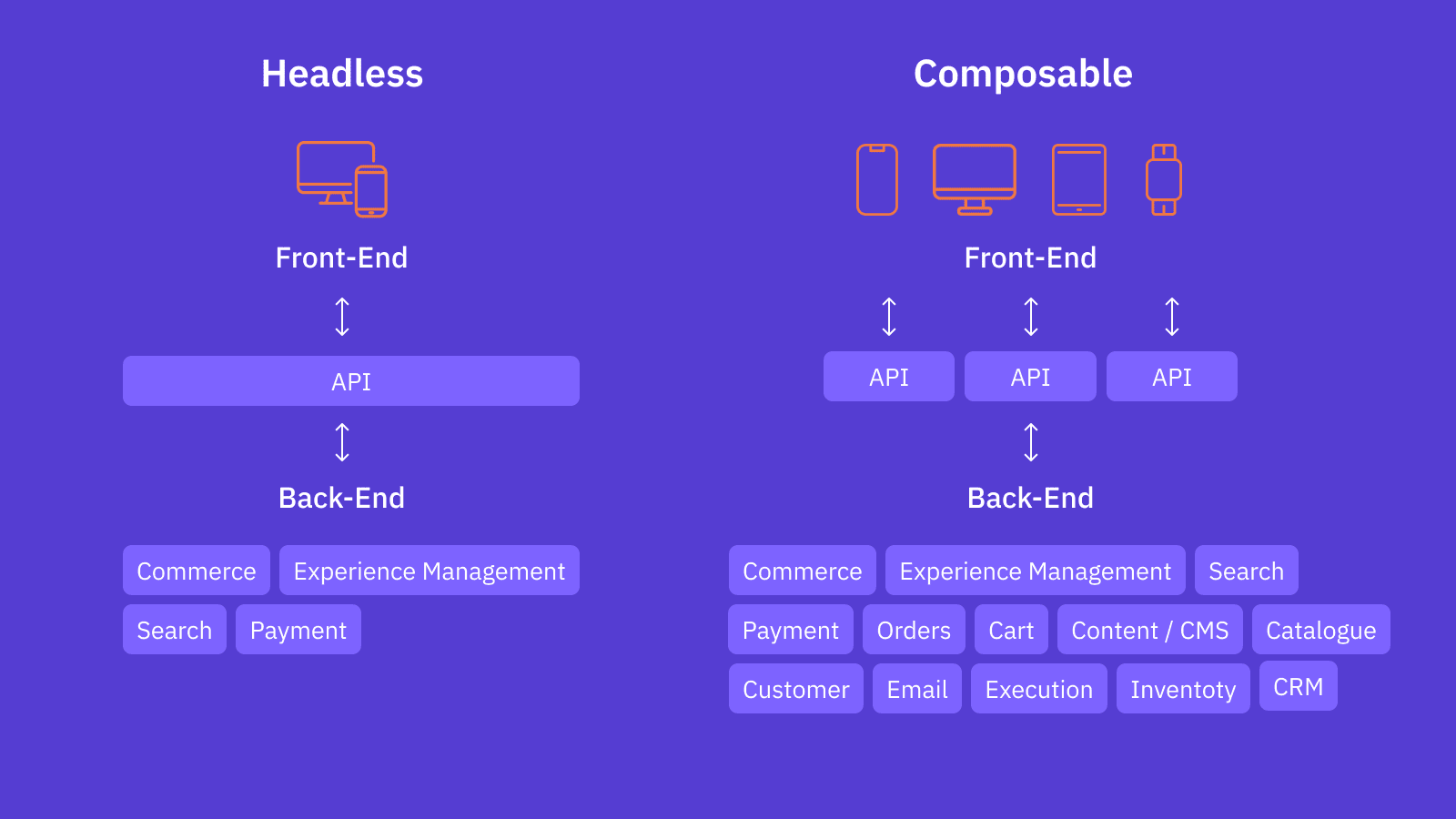
Headless commerce is a lot like composable commerce — both involve decoupling your store’s frontend (the visual components that your customers interact with) from its backend (the infrastructure that keeps your site up and running).
This means that APIs facilitate communication between the frontend and backend so that the backend doesn’t require a frontend built in the same language or framework.
You may still be using the same platform for all components, but you’ve separated the customer-facing parts from the site’s functionality.
With composable commerce, APIs don’t just manage communication between the backend and the frontend, but they also connect different backend microservices. And the modules you use don’t have to come from the same source — you can pull in any PBC
Relevant read: 12 Best Headless eCommerce Platforms for Your Online Store
Why You Should Adopt a Composable Commerce Strategy?
95% of those aware of composable commerce believe it’s the future of eCommerce. What’s causing businesses to move away from traditional models toward a different digital commerce experience?
Specialized Business Needs
Many businesses turn to composable commerce when they identify specific business needs that their traditional platform doesn’t offer. They realize that they need to be able to adapt their eCommerce solution to new requirements.
An example of this is an eCommerce business that wants to start a subscription box. A traditional eCommerce platform may not offer automated recurring billing, advanced invoicing, or other necessary features required to run a subscription box business. Adopting a composable approach lets you add subscription functionality to your existing online store.
For example, Chargebee can be combined with other modules, including traditional eCommerce platforms like Shopify or Magento to handle recurring billing, payment recovery, checkout , customer retention, and subscription analytics for your online store.
Relevant Read: See How Kabo Increased AOV by 25% with Chargebee’s subscription eCommerce platform
Accommodating Rapid Changes
The eCommerce landscape is constantly shifting. Customers expect you to offer an up-to-date experience with all of the latest features.
To future-proof your business, it’s important to be able to change the composition of your commerce solution at any time. Composable commerce lets you make these shifts quickly.
Differentiation
eCommerce is a competitive space, and it’s hard to stand out. Moving to composable commerce lets you offer an eCommerce experience that no one else provides.
Rising Costs
Some eCommerce businesses move to composable commerce when traditional platforms are no longer worth the price. A composable platform won’t necessarily be cheaper, but you can trust it to be more cost-effective.
That’s because you’re paying for exactly the features you need for your store — no more, no less.
How to Get Started with Composable Commerce?
If you’re ready to experience the benefits of composable commerce, follow these steps to get started.
1. Prepare Your Team
Composable commerce has advantages over traditional eCommerce architecture, but it also has a downside: it requires some technical expertise. Before you get started with composable commerce, make sure you have people on your team who can:
- Integrate backend components using an API-first approach
- Use development technologies like React, Jamstack, or Next.js
- Create a uniform design and UX for all services, even if the components come from different vendors
2. Identify Business Goals and Solutions
Composable commerce is all about selecting the perfect software solution for every business objective. But replacing all of your existing architecture at once can be time-consuming and overwhelming.
So start with the highest-priority items. Make a list of the features and functions you would like your eCommerce site to have, and identify the ones that will have the biggest positive impact on your business. Then, look for API-driven solutions that meet those needs.
3. Choose a Composable Commerce Platform
The composable commerce approach doesn’t require you to use any specific software. However, adopting a composable commerce platform makes it easier to create your custom application from modules of your choosing.
Keep reading to learn more about selecting a composable commerce platform.
What to Consider When Choosing a Composable Commerce Platform
Getting started with composable commerce can be intimidating, but the right platform can help. With composable commerce, you’re not locked into a vendor, but your eCommerce platform can make a big difference in the success of your store.
Here are some things to look for in a composable commerce solution.
Quick and Easy Set-Up
Combining a laundry list of eCommerce application modules into one seamless solution can be complicated — but it doesn’t have to be. You’re looking for a platform that makes it seem easy to get set up and start adding components.
Some composable commerce platforms have pre-built components that let you get started faster.
Flexibility
Flexibility is one of the key benefits of composable commerce. To ensure that you have as much flexibility and scalability as possible, check if there are any limitations on the number or type of services you can add to your platform.
The possibilities should be essentially unlimited. Even if you’re only adding a few components now, you should be able to modify your application to any future need.
API-First
API-first means that the platform takes a product-centric approach to APIs. APIs aren’t just integrations, but products themselves.
In other words, instead of creating software to fulfill a particular need and then tacking on APIs to make it compatible with other services, an API-first composable commerce approach focuses on the API connectors from the start.
The advantage to API-first is that APIs are consistent and reusable. All of the functionality within your application is accessible through your APIs.
Pricing
For many small and medium businesses, the choice of an eCommerce platform comes down to cost. Naturally, you want your composable commerce solution to be cost-effective.
As with a traditional model, you’ll pay a subscription fee to the eCommerce platform. Some platforms base your monthly cost on your transaction volume, while others base it on revenue.
In addition to the composable commerce platform, you’ll have to pay for licensing for your third-party modules. Depending on the platform you choose, you may have implementation, support, and training fees as well.
Customer Support
Good customer support is essential for any solution. When it comes to composable commerce, you have extra considerations.
Your eCommerce solution is composed of modules from several vendors. You might want to have support relationships with each of these vendors. But sometimes, a composable commerce platform provides a single point of contact to help you deal with issues related to any of your PBCs.
Consider how you would like to approach customer support for your multi-vendor solution before you shop for a platform.
Top 5 Composable Commerce Platforms
A composable commerce application isn’t just one solution but a compilation of many software components. There are many benefits to that sort of architecture, but it can get complex.
A composable commerce platform can help you easily build and deploy your composable eCommerce application. Although the platform won’t be the single source of your software services, it may provide some core eCommerce functionality that you can extend through third-party components.
Here are a few of the best composable commerce platforms.
1. Elastic Path
Elastic Path is a digital commerce platform that supports composable architecture. It’s designed to make composable commerce more accessible by helping you manage a multi-vendor solution.
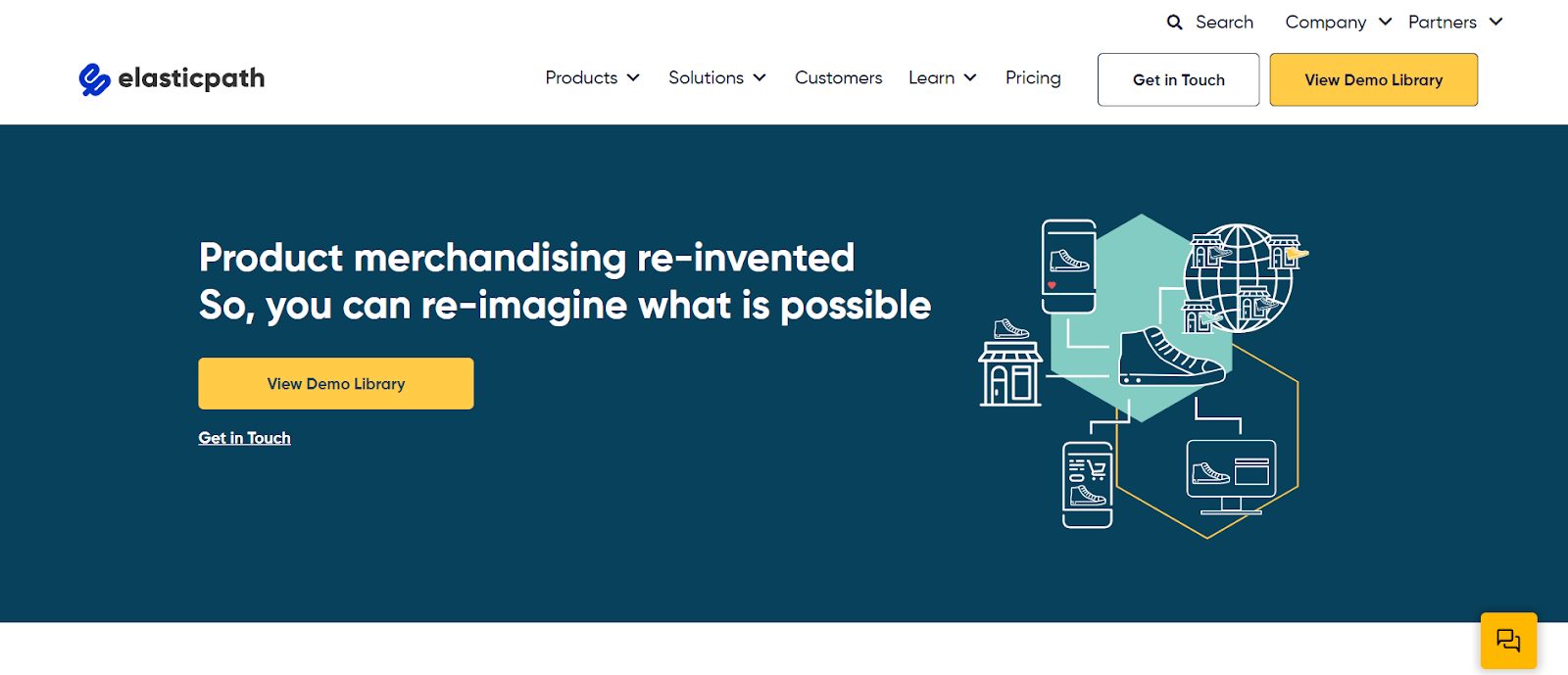
Elastic Path lets you connect components to your solution with REST Level 3 hypermedia APIs. It also provides core commerce capabilities, including payment processing, omnichannel ordering, real-time inventory checks, and the ability to create promotions.
When your eCommerce solution comes from multiple sources, it’s sometimes hard to know who to call when you have a problem. Elastic Path can serve as the primary point of contact for managing issue response across your multi-vendor application.
Pricing is based on your transaction volume. If your business does $10 million in GMV or less, pricing starts at $50K/year.
2. commercetools
commercetools is a platform built on MACH — microservice-based, API-first, cloud-native, and headless — principles. This platform helps you assemble the microservices you want and need for your business.
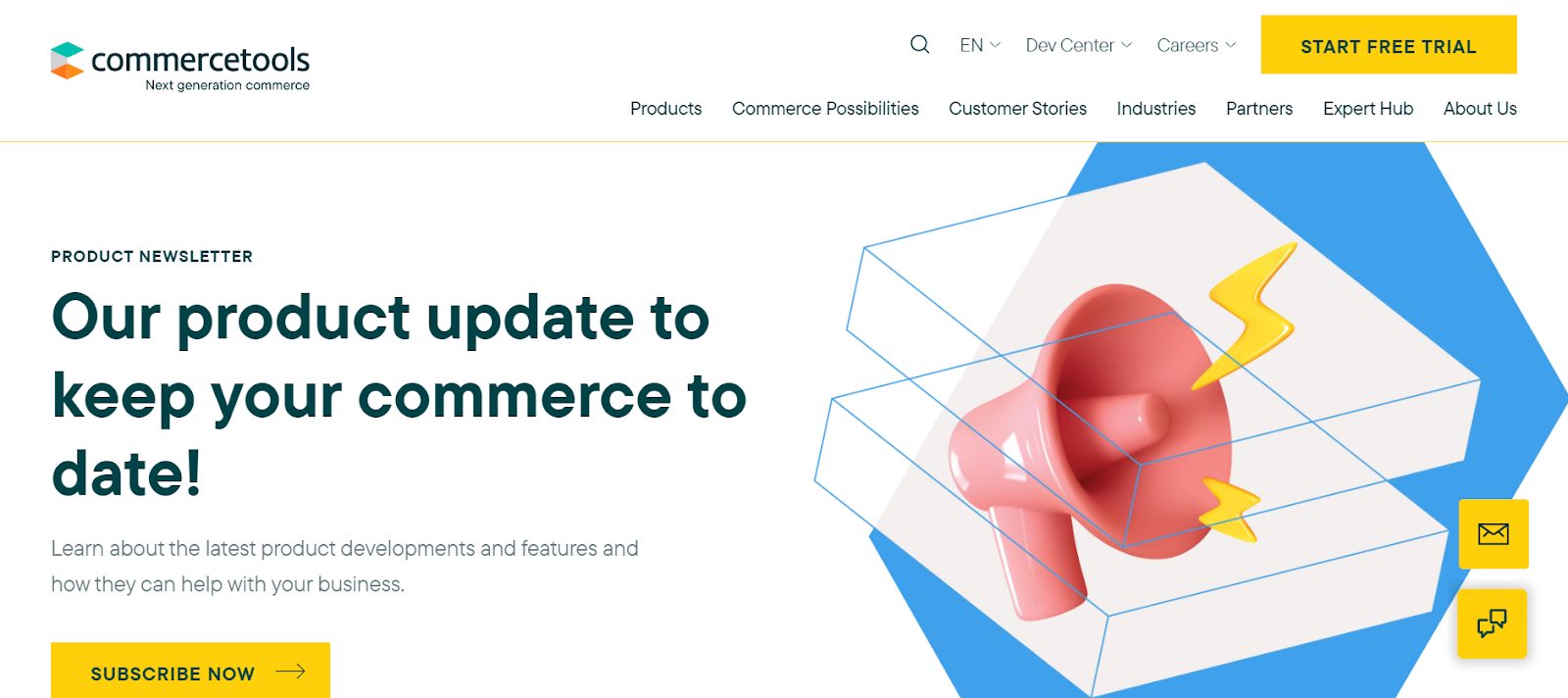
All commercetools features and functions are available via extensible APIs. commercetools’s core commerce features include catalog management, shopping cart functionality, and order management.
The commercetools Integration Marketplace is a library of supported third-party vendors that you can integrate into your eCommerce store. It includes solutions like Contentful for website content, Algolia for search and discovery, and Klarna for global payments.
commercetools isn’t transparent about its pricing, but we do know that it offers a 60-day free trial.
3. Spryker
Spryker bills itself as a “modular, customizable commerce stack with next-generation cloud capabilities.” It’s designed for both B2B and B2C and offers 500+ PBCs that you can use to assemble your eCommerce solution. Some Spryker PBCs include:
- Product management
- An order management system
- Price management
- Tax management
- CMS
- Site search
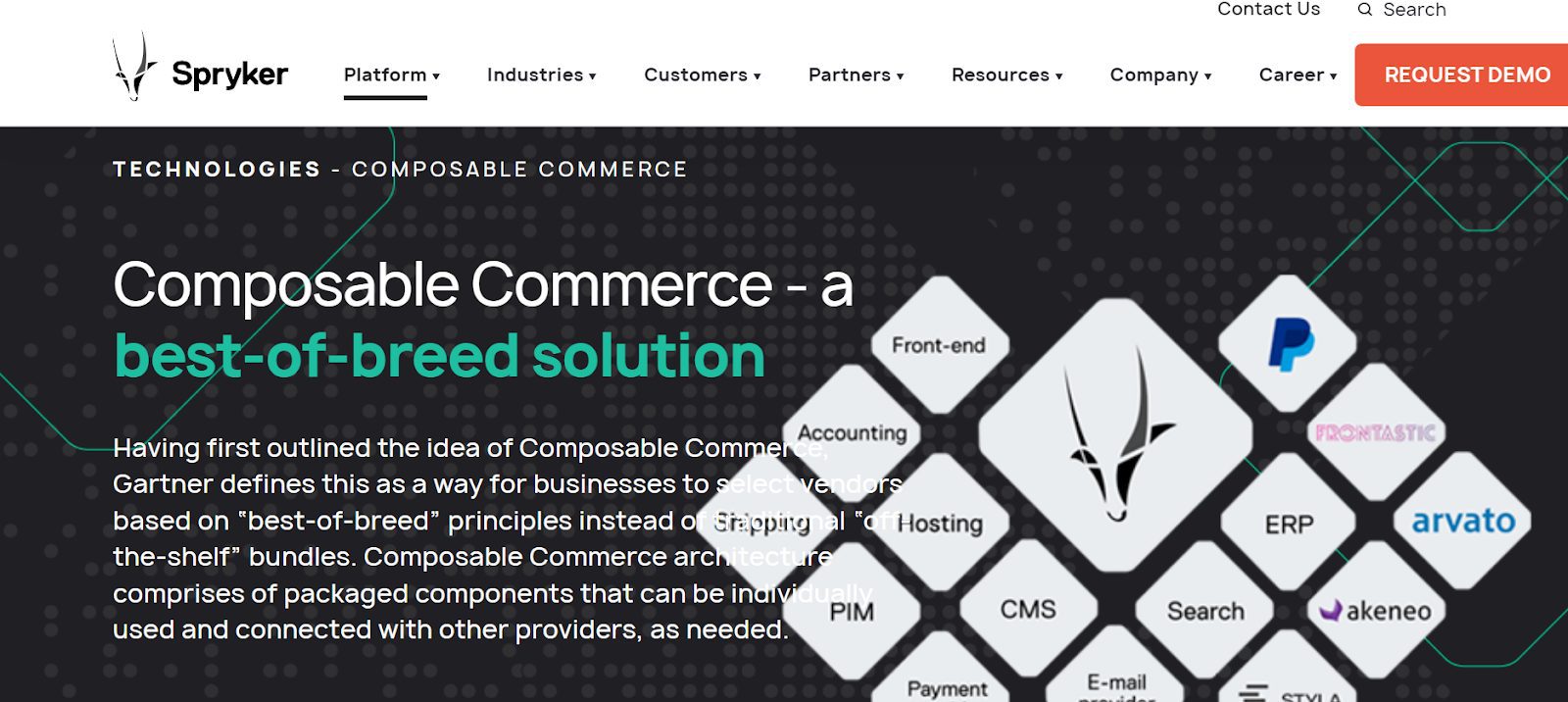
Along with Elastic Path and VTEX, Gartner considers Spryker a visionary in the digital commerce space.
If you need to migrate from a different platform, Spryker offers guidance for replatforming.
It is not transparent about its pricing and doesn’t offer a free trial.
4. VTEX
VTEX offers both VTEX IO, a low-code development solution, and VTEX Commerce Cloud, an eCommerce platform. By combining the two, customers get a composable eCommerce solution.
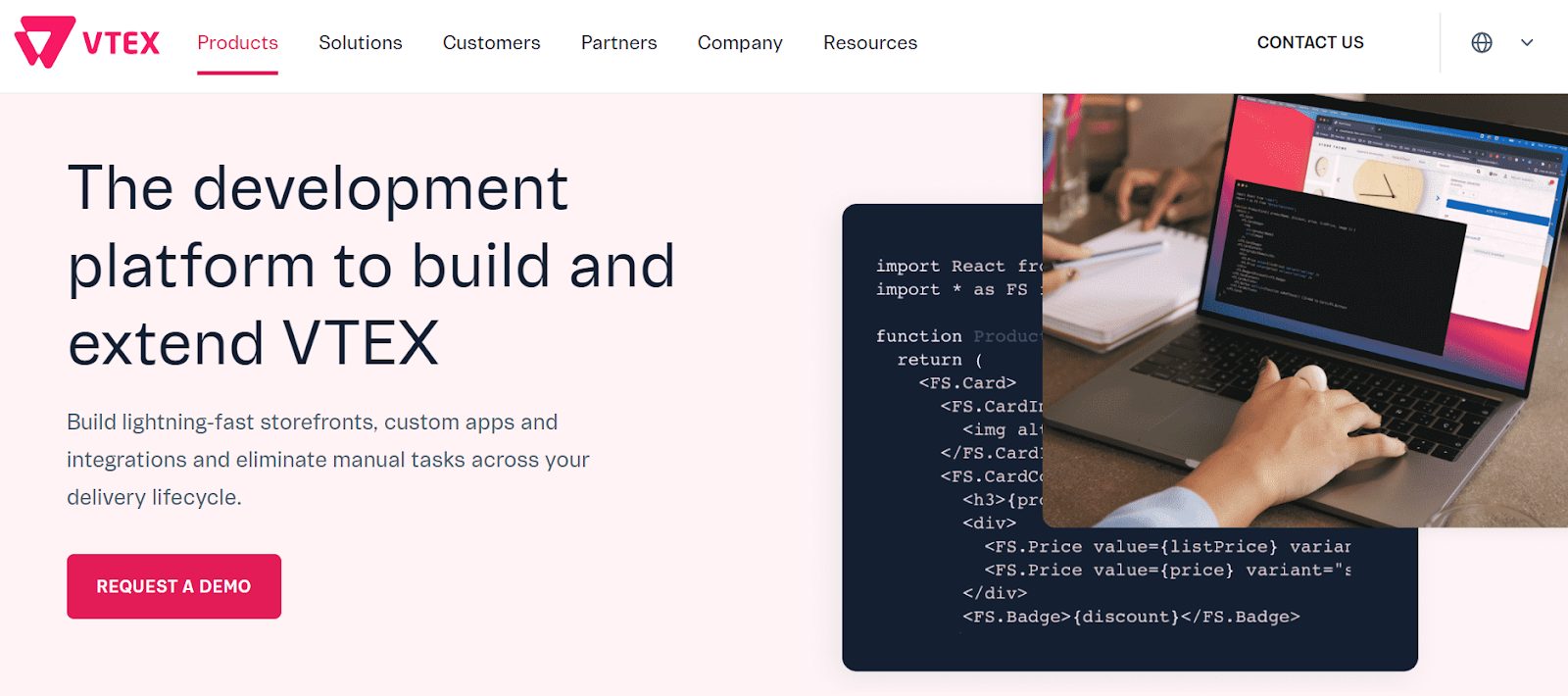
VTEX’s native capabilities include a CMS, secure payments, one-click checkout, and omnichannel services.
VTEX offers an on-demand pricing model based on revenue share. For details, talk to the VTEX sales team.
5. Fabric
Fabric offers an eCommerce platform as well as individual PBCs. The software components you can choose from include software for managing products, prices, promotions, inventory, and orders.
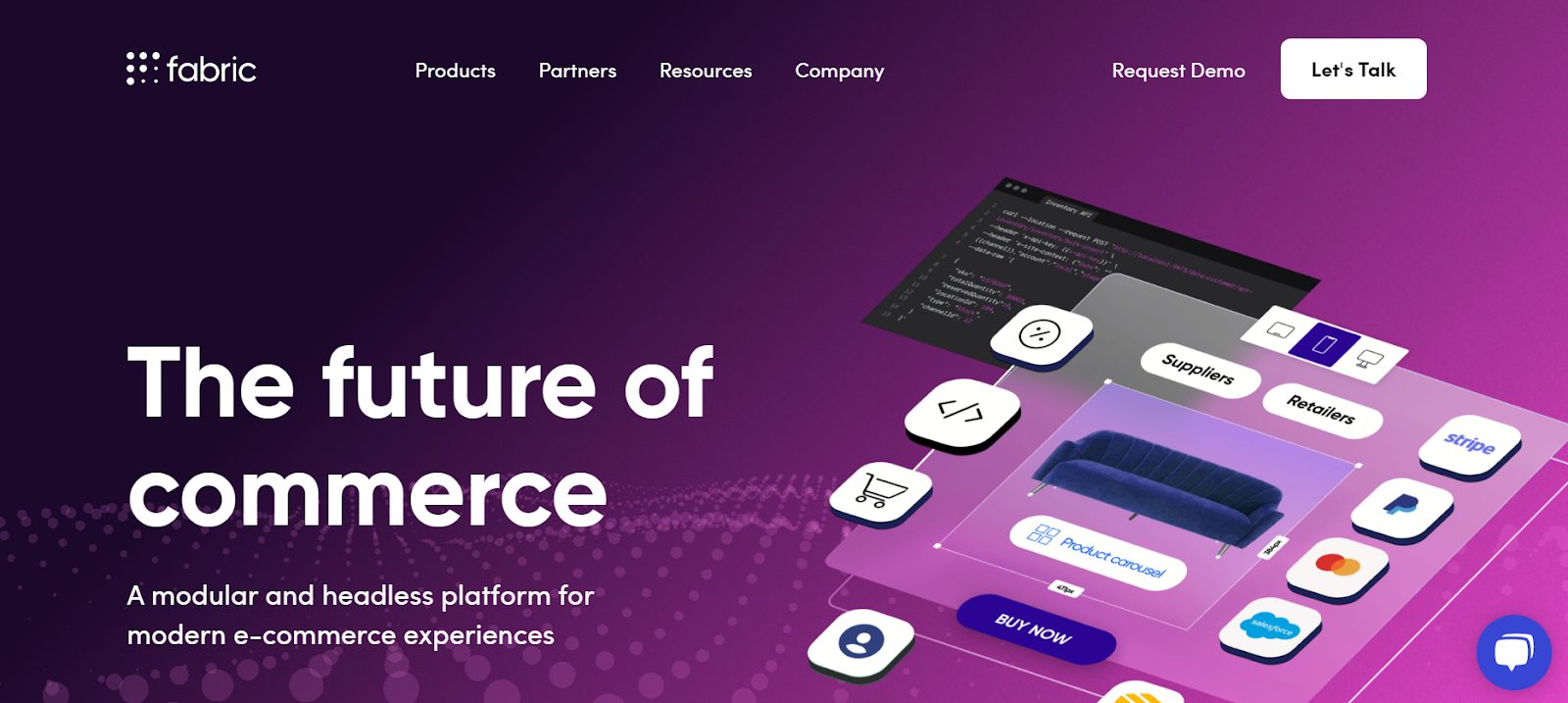
Fabric Storefront lets you quickly launch an attractive storefront with pre-built commerce functionality.
Fabric comes with more than 300 API endpoints hosted on a global network of over 100 edge servers. Pricing for Fabric starts at $6,000 per user per month.
Conclusion
Composable commerce is a relatively new concept, but it’s catching on fast. It lets eCommerce companies be more agile and helps them provide a customized customer experience. Building a composable platform comes with higher upfront costs, but it offers a better long-term ROI.
If you’re turning to composable commerce to start a subscription commerce business, you need the right subscription management solution to effectively scale. Learn more about eCommerce subscription management and how Chargebee can help.

